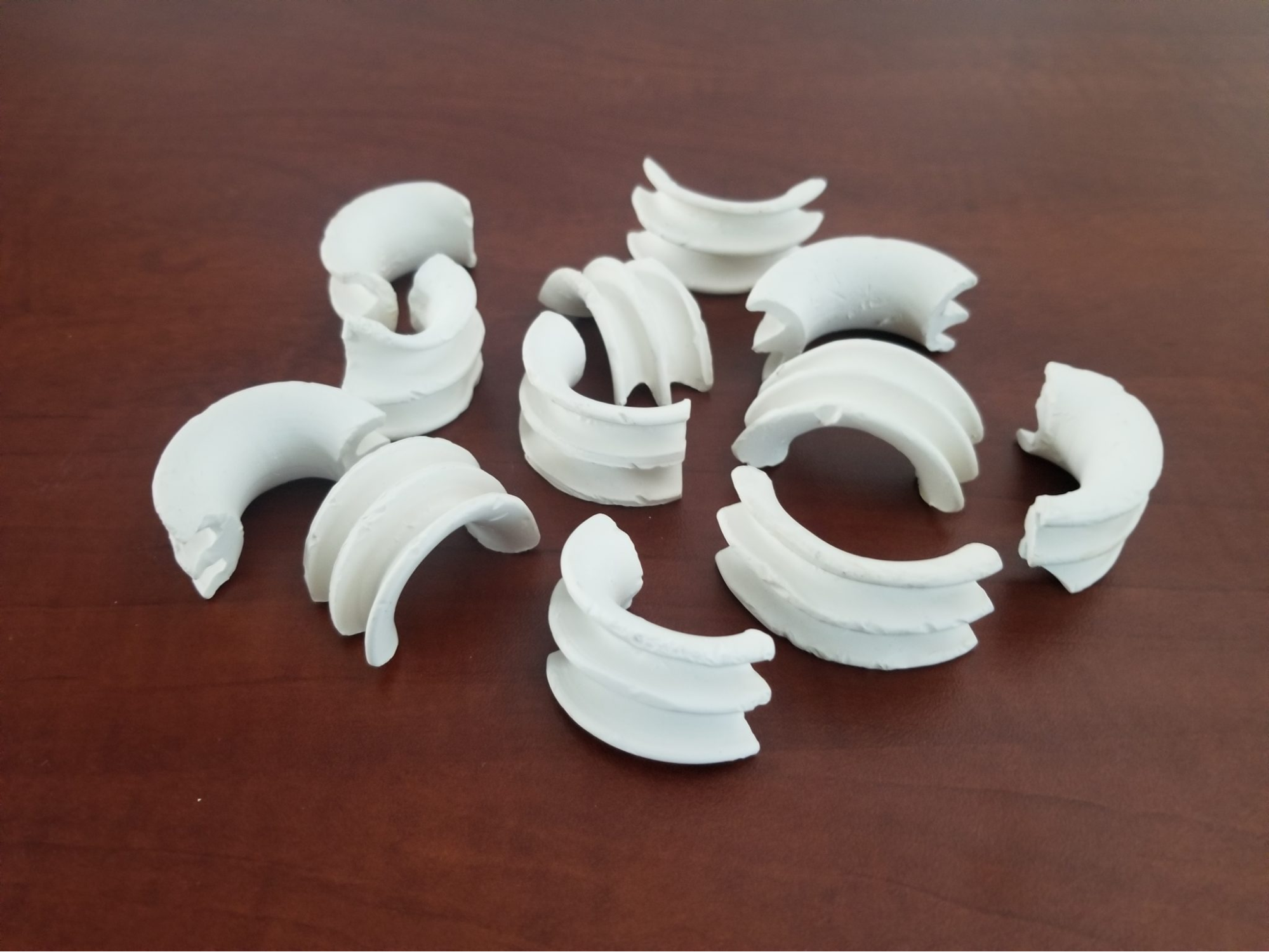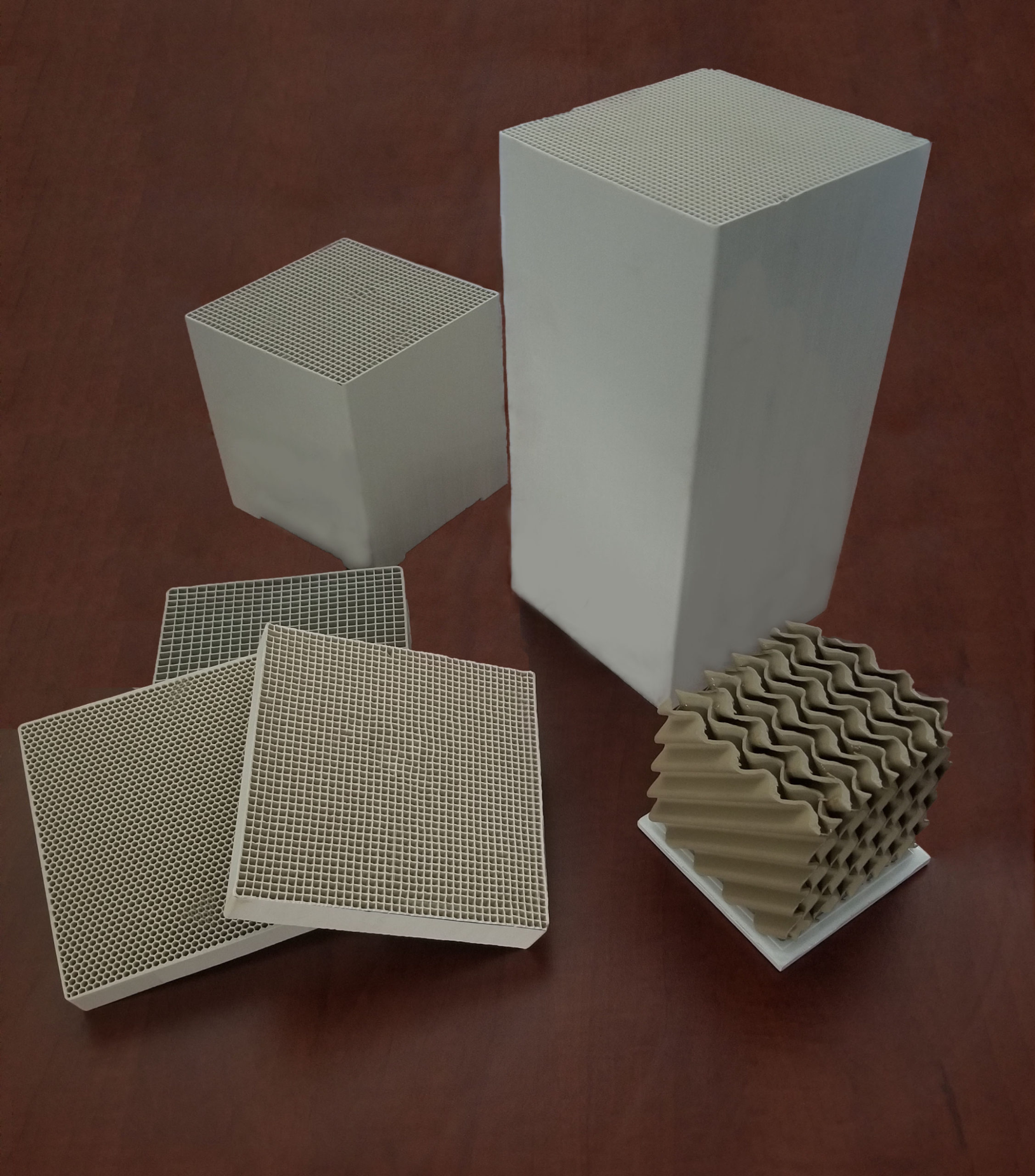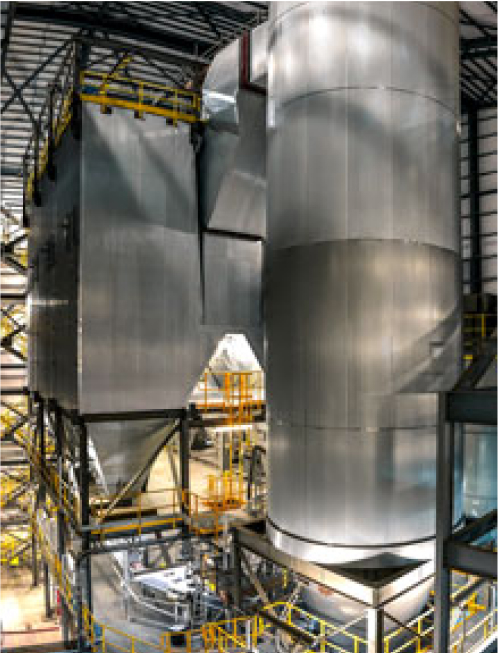Ceramic Media Exchange
Ceramic heat exchange media is a key element to every installed Regenerative Thermal Oxidizer (RTO) and Regenerative Catalytic Oxidizer (RCO). With a wide variety of ceramic media types available the selection of the correct type can be critical to the proper operation of an RTO.
Let’s evaluate the basics of today’s current ceramic media options and how they impact the efficiency of the process. This information can help to manage the operating costs of your RTO or RCO whether your system is a new installation or a rebuild.
Understanding of the inputs into an RTO
Before discussing ceramic media types, there is one very important point to consider: This is the understanding of the inputs into an RTO and how the inputs may affect the ceramic media. RTOs operating on gas streams that are free of particulate matter and with low VOC concentrations can be expected to operate for many years without any specific maintenance, perhaps even decades. However, RTOs treating gas streams with high amounts of condensables, solid particulates and/or extremely high volatile organic compound (VOC) concentrations may have limited life spans principally because of the threat to the ceramic heat exchange media.
In general, there are two main types of heat exchange media: random packing and structured block. Each offers unique advantages and disadvantages that must be considered.
Random Packing of Ceramic Media
Random packing was the first type of ceramic media used in RTO applications and is still used today in certain applications. Note that the most common form of random packing is the saddle (see photo) although there are several other shapes that are sometimes employed. The advantages of this type of media are 1) ease of installation and removal, 2) good resistance to plugging and 3) lower first cost. The main disadvantage is that random packing requires relatively low gas velocity which means an RTO designed with random packing media needs a large area to maximize its heat exchange properties.

Typically, an RTO designed for +95% Thermal Energy Recovery (TER) with random packing will require a random media depth of 8’. This 8’ of depth contributes to a high pressure drop associated with the RTO fan that moves air through the system.
Structured Media
Over the years a great deal of attention has been focused on the advancement of types of ceramic media for use in RTOs with the intent of reducing fuel and electricity requirements. This focus has led to the development of several types of structured media designs as shown. These structured designs offer a variety of performance advantages including lower pressure drop, higher thermal energy recovery and improved gas flow distribution.
One type of structured media, the so-called monolithic media is particularly useful in that it allows operation at higher velocities. In contrast to random packing these monolithic designs operate with laminar gas flow.
True Laminar Flows
True laminar flow allows this type of media to provide much better heat transfer at significantly higher velocities than with random media which operates in the turbulent gas flow range. This means that much less media is needed to provide the required heat transfer. For example, an RTO designed with monolith block may only need five feet of depth while an RTO with random media would need eight feet for the equivalent heat exchange duty. This represents significant savings in the brake horsepower (bhp) requirement for the RTO fans and a much smaller footprint of the unit.
This type of media provides the most open area and the lowest pressure drop. The cell density, materials of construction, and wall density flexibility of the monolith block allow for custom designs for optimization when challenging applications exist.
Random Packing of Ceramic Media
The main disadvantage of structured media is susceptible to fouling. Fouling is an undesired accumulation of a condensable and/or solid particulate on the media heat exchange surfaces and in the ceramic pores. Accumulations such as this will cause a buildup in pressure drop and, in some cases, can result in media degradation.
Another important aspect of heat exchange media selection is the material. Ceramic heat exchange media can be made in many different compositions depending on the application. For example, in RTO applications involving the treatment of gas streams with significant quantities of alkaline fly ash such as potassium oxide the design engineer may want to select a heat exchange media with a higher percentage of alumina.

This is because at high temperatures alkaline fly ash is known to attack heat exchange media with a high percentage of silica but will not have the same negative affect on alumina. However, high alumina media is more expensive and would not be necessary in fly ash free applications.
In Summary
In summary, engineers should pay close attention to the selection of the proper ceramic heat exchange media. Making the right media selection is just as important as the type of RTO.
If you are considering a rebuild or have maintenance concerns, we can help. If you think your media is settling, experiencing chemical attack by evidence of softening, cracking or degradation of the media beds, cold face support plugging, or burner exposure in which the burner’s flame temperature is higher than the ceramic melting temperature, you may need LDX Solutions’ assistance.

